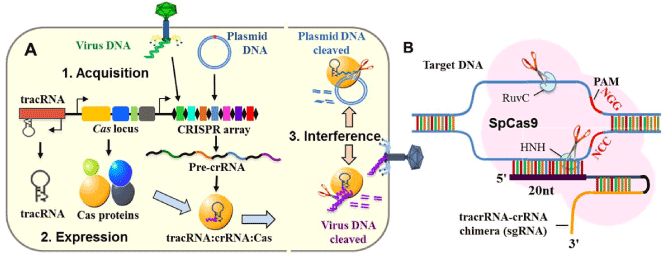
 |
| Figure 1: An overview of type II CRISPR-Cas system. A. CRISPR-Cas functions as an adaptive immune system in bacteria and archaea. Short fragments of foreign DNA, called spacers, derived from invaded phages or plasmids, are incorporated into the genome between CRISPR repeats, which serves as a memory” of past exposures. Transcription of CRISPR loci components produces tracRNA, crRNA and Cas nuclease proteins, which in turn form a tracRNA: crRNA:Cas complex. Each tracRNA:crRNA:Cas complex seeks out the DNA sequence complementary to the crRNA. After the complex binds, Cas nuclease cleaves both strands of DNA to interfere with the invasion of phages or plasmids. B. Schematic of SpCas9 with tracRNA and crRNA cleaving target DNA. PAM sequence is required for crRNA binding and cleavage by the Cas9 nuclease, which has RuvC and HNH endonuclease domains that cut both strands of DNA, respectively. |